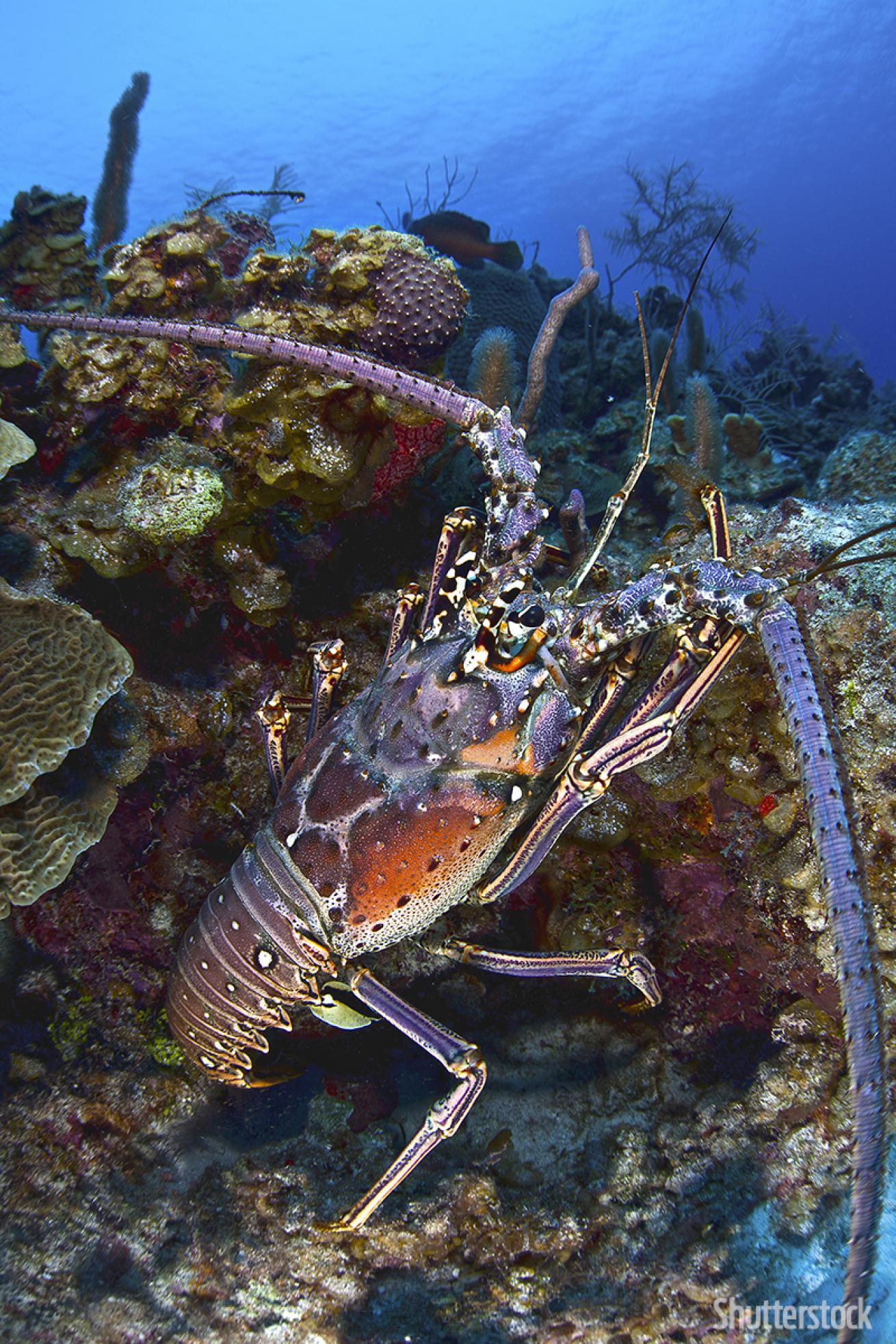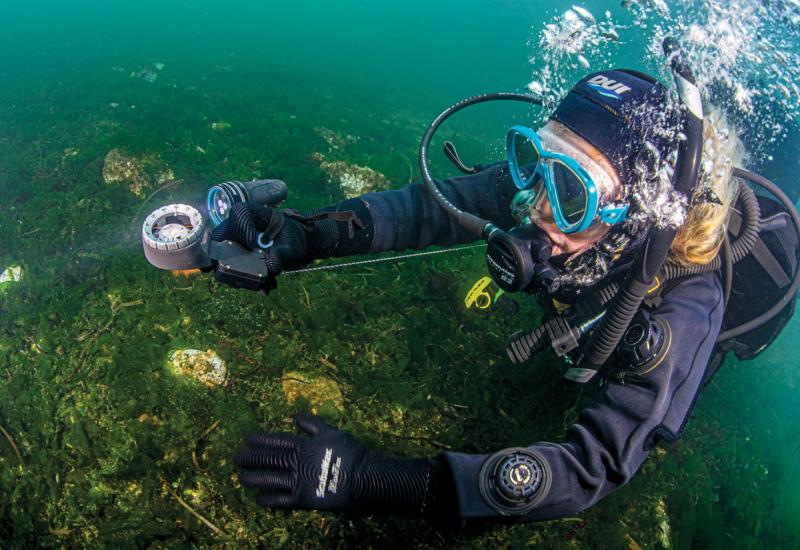Bagging the Bug: How to Have A Successful Lobster-Hunting Season
Lobster season might be the only time your mouth waters during a dive. The delicacy locked inside the thorny shell of this secretive crustacean is a major draw for divers each year to the reefs of Florida. The Sunshine State’s annual event invites licensed participants to take by hand a limited number of Florida spiny lobsters per day from August 6 through March 31, plus an introductory mini-season that takes place for two days in July. Considering the price tag on the average lobster dinner, it’s no surprise that the opportunity to harvest a delicious meal without the middleman lures thousands of hunters to try their luck against these wily crack dwellers.

ShutterstockFlorida's mini-season is July 26 and 27.
“People love the challenge of catching a fish or other live animal, especially something that is considered so good to eat,” says Nancy Diersing, a science interpreter with the NOAA Florida Keys National Marine Sanctuary.
Each year, the opening mini season elicits a frenzied festival feeling from Jacksonville all the way to the Florida Keys and up the Gulf of Mexico to Pensacola. And while it’s difficult to focus beyond the drawn-butter euphoria of a successful hunt, lobster season also accounts for a high number of dive-related injuries — and fatalities. But when seafood lovers are properly prepared, dive an appropriate plan and obey the rules of the hunt, it’s time to feast.
“Florida is one of the few places you can use scuba to get lobster and use snares and nets to catch them,” says Samuel Fretz, an instructor at Force-E Scuba Centers in Pompano Beach, Florida. “In most places, you are restricted to maybe freediving or using only your hands.”
So take some advice from these experts to make this season safe and sustainable.
Play by the Rules
The Florida Fish and Wildlife Conservation Commission sets the rules for recreational lobster harvesting to safeguard both the species and divers. And they are strictly enforced.
“All regulations that pertain to catching lobsters are important for the lobster harvester to know and abide by,” Diersing says. “The biggest concerns revolve around preventing damage to corals and other benthic marine life that can be harmed inadvertently by overzealous divers hunting lobsters — not to mention taking more than your daily bag limit, taking females with eggs and taking lobsters from closed zones in a marine sanctuary.”
A license is required for every diver harvesting lobsters, and rules can vary from region to region, especially in protected waters. It’s always best to consult local authorities, or ask your local dive shop for advice.
Be a Mindful Diver
The added task load of wrestling a reluctant lobster from its hiding place can be a dangerous distraction.
“The intense focus on hunting can lead to poor situational awareness resulting in run-ins with hazardous marine life such as lionfish,” says divemaster Justin Newton of Pura Vida Divers in Riviera Beach, Florida. “Also, increased boat traffic, especially during mini season, can put divers at risk when surfacing with their prize. Always use a dive flag.”
“When lobster hunting, it is easy to forget about what your gear and body are doing,” Fretz says. “Most often these things are lying on the reef, breaking corals and sponges, so it’s very important to practice good buoyancy and plan your approach to not only get the lobster, but also keep the reef free from damage.”
“Protecting the underwater environment ensures there will be plenty of lobsters to catch in years to come,” Newton says. “The damage done by one careless moment hunting could take a reef years to recover.”
Practice Maximum Caution
The lure of lobster season often brings divers out of mothballs, with rusty skills, hazy memories and gear covered in dust. For hunters who’ve been dry for extended periods, instructors Fretz and Newton recommend taking a refresher course and having equipment serviced by a professional. Do it before your hunt, because other challenges await below.
“Running out of air, going into deco, overweighting that can lead to drowning, and getting stung by lionfish or bit by eels hiding in lobster holes are the most common accidents,” says Fretz.
“Many divers don’t realize how powerful lobsters are,” Newton says. “They can pull the snare right out of your hand. The fight isn’t over until you get them successfully in your bag.”
Hone Your Skills
“Being patient and moving slowly and deliberately will lead to the best success rate,” says Newton. “If you approach in this manner, the lobster might even move farther out of its hiding place to inspect you, making it easier to slide your snare or tickle stick behind it. Avoid the antennas on the way past and you’ll be in great shape.”
“Lobsters push sand up around holes they are hiding in, so look for this,” Fretz says. “They also like to move after storms, so go out after a storm to see them walking around.”
“Two of the easiest ways to miss your catch are by rushing into the hole to get the lobster and scaring it back inside, or not knowing how to properly use your lobster equipment,” Fretz says. “Think about lobster hunting like the emergency first-responder course — stop, think and act.”
“I prefer the streamlined approach of carrying only a snare (which can also serve as a tickle stick), a lobster bag and a gauge so I’m not carrying a bulky net that can easily get snagged on things underwater,” Newton says. “Store your snare so it does not get bent or kinked, because having that nice circular opening will make getting it around a tail that much easier. Always carry two gauges, with one stored in a safe place in your kit in the event you do lose one underwater; you’ll have a backup that could keep you from getting in trouble.”
“Using a snare will greatly increase your overall catch rate,” says Fretz. “But make sure you practice with it on land or in the pool using a water bottle to simulate the lobster.”
5 Rules For A Successful Season
From Nancy Diersing, NOAA Florida Keys National Marine Sanctuary
1) Unless exempt, a harvester is required to have a state of Florida recreational fishing license with a crawfish/lobster stamp/tag.
2) No harvesting is permitted within the 18 Sanctuary Preservation Areas and/or the two sanctuary’s Ecological Reserves.
3) Lobsters must have a carapace — the upper section of the exoskeleton — greater than 3 inches long to be of legal harvest size. They must be measured while they are in the water and must remain whole until you are back on land (the tails can’t be removed). Harvesters must follow size and bag limits set by state and federal fisheries regulations.
4) Lobsters cannot be harvested using a spear or other gear that penetrates the shell of the animal.
5) It is illegal to take a “berried” female lobster — a female carrying eggs. Eggs are contained in a yellow, orange or brown gelatinous mass found in the inner side of the tail.
More Training:
Making A Save-A-Dive Kit
Ask The Experts: How Can I Hunt Safely?
How to Rescue Yourself










